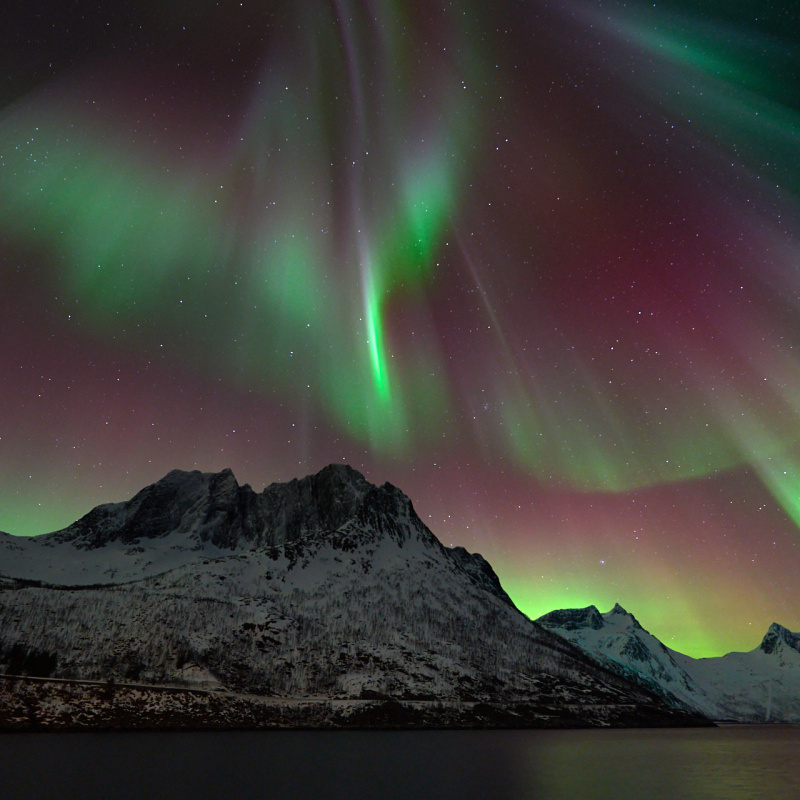[Timelapse from May 11 2024]
AURORA STORM
My favourite thing about this weekend’s aurora storm was being able to share the moment with so many people. I’m used to watching and waiting for these events in the Arctic Winter, with a handful of companions and a mug of hot chocolate. This time I was wearing shorts and watching my social media feed blow up with images captured in downtown Seattle. An amazing shared moment.
Suddenly a whole lot of people who do not normally enjoy aurora photography were asking a bunch of questions. There were a few lessons to take from all of this, and I wanted to make a short post about what my followers on social media said was most useful.
On the evening of May 11 when the big event hit Australia myself and Shellie were in the middle of a 4-day Food Photography Workshop. We had no plans for aurora chasing, and were almost ready for bed. Then I got a message from someone in Seattle who had watched one of my YouTube videos about auroras and tagged me in with his timelapse. And it was marvellous. He had got himself on the rooftop of a building and captured a timelapse of across the city. Air traffic was zipping across the sky, the streets below were oblivious to the moment above, and waves of green and red aurora were dancing in the sky. They were strong enough to punch through the light pollution that blocks out most of the stars.
And because this fella had tagged me in his video, I decided to step outside and check our own night sky. And it was on. In a small paddock surrounded by trees and bush we grabbed an hour of the unfolding magic. For sure this was a very gentle aurora compared to what we capture in Norway every winter, but none-the-less it was special and all the more so for sharing it with a few companions. And indeed a large chunk of the planet.
BASIC SETUP
My basic setup for auroras is simple enough. Shoot wide open with a very fast lens. Keep the exposures under 10sec and if possible down to 2sec. Push the ISO capability of your camera to get a good exposure. I have a custom setting in my camera as follows:
5sec
F2.8
ISO 4000
And then you adjust as required. If you’re closer to the aurora circle and the light is bright, you can shoot shorter exposures or drop the ISO. My LUMIX S5 has a high gain circuit that reduces noise at ISO 4000, so that’s what typically I use. On the night of May 11 I had my little 12MP ZV-E1 instead which has a high gain circuit at 12800, plus the Sigma 20mm F2 lens. So in that might I went for F2 and ISO 12800 with just a 2.5sec exposure. It made for bright stars in the Milky Way, plus a smooth time lapse. Start with a baseline setting, then adjust as needed!
WHAT WE LEARNED
What we learned from chatting with first-time aurora chasers across the globe was worth sharing too.
1. What you see on the back of your camera screen in the dark will look waaaaay brighter than it really is. Once you get back to your computer screen you’ll wish you bumped up the exposure by one or two stops.
2. Under-exposing the night sky will lead to maximum noise. You are pushing a high ISO RAW file and those very dark sections are hiding some very noisy data.
3. That timelapse mode on the camera is a very useful feature. When you get your exposures setup and a nice composition, rock the drive mode across to timelapse and let the camera do the work. This is a good alternative to a cable release, to reduce camera shake, but also has the benefit that you could assemble a series of aurora moments into a single timelapse movie
4. Fast lenses are nice lenses. Aurora can move pretty fast at times, so if there’s a way to get your exposure down to 2sec without under exposing the scene, then you end up with better definition in the ribbons.
5. We also learned that where in the world you live makes a huge impact on how often and how grande your aurora sightings are. There’s a good reason that me and Shellie head to Norway each winter to enjoy auroras. You don’t have to wait for a once in 20 year event to get a great photo.
6. The final lesson is one that gets overlooked by a lot of people. Clouds suck when you’re hoping to see an aurora! Doesn’t matter how spectacular the inbound space weather is forecast when there’s local cloud cover spoiling the view.
I don’t chase aurora events in the southern hemisphere. I live in Melbourne and that’s not usually regarded as far enough south. Tasmania has a lot more inspiration for auroras than we do in Victoria. Even then, you need a big event to get into the game in Tassie. I enjoy the Arctic because I can fly into the Tromsø airport and I’m already at 70°N. It falls right under the aurora oval and that makes for great photography even on a low level aurora night. And I love the winter landscapes of Norway, with it’s dramatic fjords and charming cabins.
If the Aurora Storm this weekend gave you a taste for more, come and join me and Shellie and Gunnar in Norway for a chance to chase the big sky version :)
– Ewen
https://ewenbell.com/norway
https://ewenbell.com/polar



Original post by @coprolite9000@mastodon.me.uk
https://mastodon.me.uk/@coprolite9000/112421433832595597
Some of my Aurora and Norway videos on YouTube...

Keep Reading
Join Ewen's newsletter for monthly updates on new photography articles and tour offers...Subscribe Here










